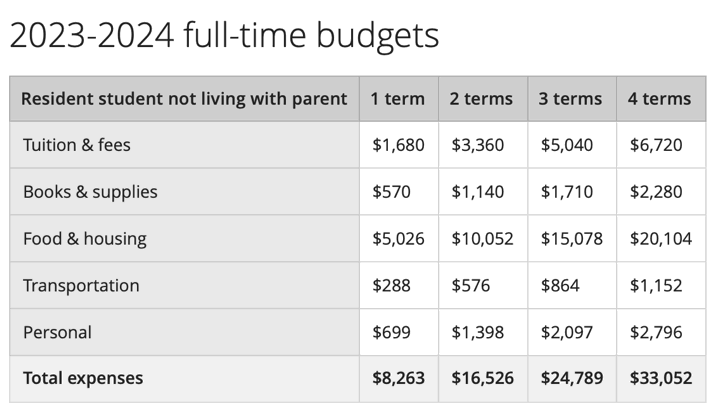If you are considering a year-end contribution to a 529 college savings plan, you may be concerned about the possibility of not using the full balance. To be honest, this is not something that I worry about at all (spread across three kids, I highly doubt I’ll face this issue), but I do find that this question comes up regularly.
Here are the standard ways to assuage these fears:
- Qualified expenses include a lot of things besides tuition, including room and board, textbooks, computer equipment, etc.
- Qualified expenses also go beyond a traditional 4-year college to include graduate school and other forms of education including registered apprenticeships and vocational school. You can also use it to help pay for private school K-12 tuition (up to $10k/year) for a younger child or grandchild.
- You can change the beneficiary to another child, yourself, or a grandchild and keep it invested.
- If your child ends up receiving merit aid or other scholarships, you are exempt from the additional 10% penalty for non-qualified withdrawals, although you will still be subject to taxes on your investment gains (treated as ordinary income).
- Other exceptions to the 10% penalty include if the beneficiary becomes disabled, receives employer-based tuition assistance, or attends a US military academy.
- Starting in 2024, you may be able to use the 529 funds to fund a Roth IRA.
However, here’s one you probably haven’t heard of from Justin of RootofGood:
Ultimate 529 draining methodology:
Enroll half time in a community college in fun interesting classes. Pay for 6 hours to be considered half time (cost ~$1k/yr)
Withdraw from 529 the $21,717 per year for Room and board plus the $1k tuition, all qualified educational expenses pic.twitter.com/nDd9fRoS5R
— Dr. Justin RootofGood, J.D., B.S., B.A. (@RootofGoodBlog) December 15, 2023
- The overall idea is that you are allowed to claim room and board as a qualified expense if you are at least a half-time enrolled student. Room and board is expensive, especially relative to community college tuition.
- If the 529 beneficiary (could be you, could be your child) took community college classes as a half-time student for a single quarter, the tuition may cost you about $800 a term, but would also allow you to claim about $5,000 a term in room and board as qualified expenses. This could scale up to ~$3,200 tuition and ~$20,000 room and board annually.
- The eligible room and board number is up to the specific college or university’s official published allowance for room and board. Usually shown as something like “resident not living with parents”.
- This method makes the total amount a qualified expense and thus you avoid both income taxes on any investment gains AND the 10% penalty. $3,200 divided by $23,200 is a little under 14%, which may be a better percentage than what you’d pay with the ordinary income tax bracket. Of course, there is also the value from the increase in your knowledge and community connections.
The specific tuition amounts and food/housing estimates will vary by community college. Some places even offer free tuition for residents (ex. San Francisco). I took my numbers from a place I attended many years ago, Portland Community College:
Basically, instead of worrying about not having a qualified way to take the money out of your 529, here is a way that anyone can be eligible while minimizing the taxes and penalties involved. Nearly anyone can attend community college on a half-time basis.




